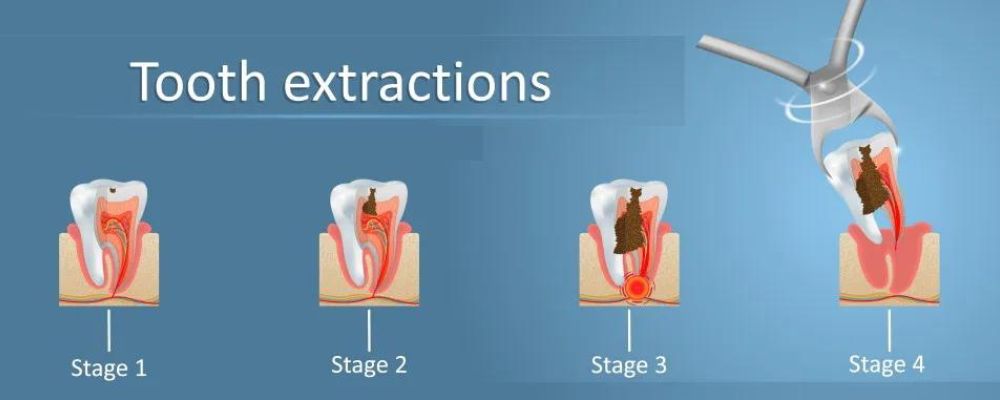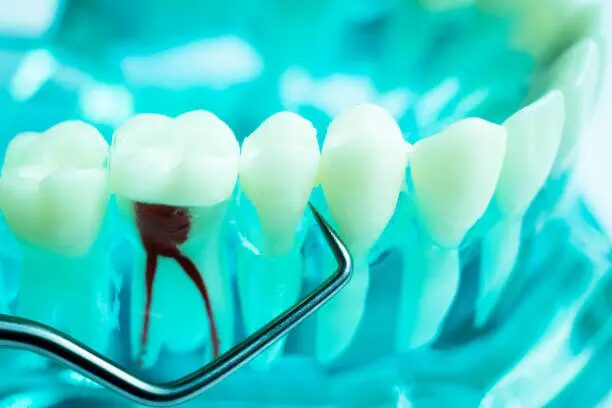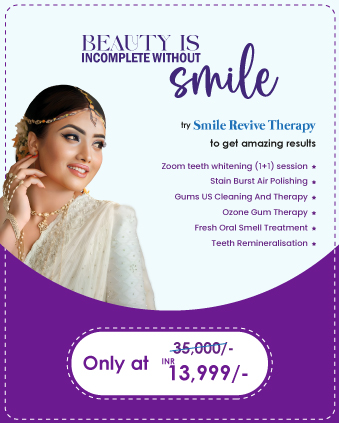Your smile is a precious asset, and maintaining good oral health is crucial for its preservation. Sometimes, dental issues like severe decay or infection can threaten the health of your teeth, leaving you with the difficult decision of whether to opt for tooth extraction or root canal treatment (RCT).
In this blog post, we will explore these two options, explaining why saving your natural tooth is worth considering. We’ll also delve into the financial implications, helping you understand the monetary gains and losses associated with each procedure. In this comprehensive guide, we will also discuss the functionality, aesthetics, and overall cost considerations associated with both approaches. By understanding the importance of saving your natural tooth and the available alternatives, you can make an informed decision that prioritizes your oral health and well-being.
Part 1: Saving Your Natural Tooth

A dentist can mimic nature but can’t replace the actual natural form.
Your natural teeth are designed to last a lifetime, and preserving them whenever possible is always the ideal choice root canal treatments are always the best choice to save your teeth Here’s why:
Functionality:
Your natural tooth helps maintain the proper alignment of adjacent teeth, ensuring a healthy bite and efficient chewing. By saving it, you can continue to enjoy the full function of your mouth without the need for artificial replacements.
Aesthetics:
Your natural tooth is unique and blends seamlessly with the rest of your smile. Preserving it avoids the need for prosthetics like dental bridges or implants, which may not provide the same natural look and feel.
Oral Health:
Removing a tooth through extraction can lead to several oral health issues. Adjacent teeth may shift, causing misalignment and potential bite problems. The loss of a tooth can also contribute to bone loss in the jaw over time.
Part 2: Understanding Tooth Extraction

Tooth extraction involves removing the entire tooth from its socket. While this may be necessary in certain situations, it should be considered as a last resort. Here are some key points to consider:
Immediate Consequences:
After tooth extraction, you may experience pain, swelling, and bleeding. The recovery period can take several days or even weeks, depending on the complexity of the extraction.
Functional Challenges:
The absence of a natural tooth can affect your ability to chew and speak properly. It may also cause adjacent teeth to shift, leading to potential misalignment and jaw problems.
- 12 Free Consultations
- 10% off on all Treatments
- 1 Free Smile Assessment
Restorative Solutions:
If you choose extraction, you will need to consider replacing the missing tooth. Dental implants, bridges, or dentures are commonly used, each with its own set of pros and cons.
Part 3: Unveiling Root Canal Treatment (RCT)

Root canal treatment is a dental procedure aimed at saving an infected or severely decayed tooth. It involves removing the infected pulp within the tooth, cleaning the root canal, and sealing it. Here’s why RCT is often a favorable option:
Tooth Preservation:
RCT allows you to keep your natural tooth, preventing the need for extraction. By removing the infected tissue and sealing the root canal, the tooth can regain its health and function.
Pain Relief:
Infected teeth can cause excruciating pain. RCT eliminates this pain by addressing the underlying infection and restoring the tooth’s health, providing long-term relief.
Restoration Options:
After RCT, a dental crown is typically placed over the treated tooth, restoring its strength, function, and aesthetics. This eliminates the need for additional tooth replacement options.
{Introduce microscopic, single visit, painless RCT here giving CTA}
Part 4: Financial Considerations
When it comes to dental procedures, the cost is a significant factor. Here’s an overview of the financial implications associated with tooth extraction and RCT:
Tooth Extraction:
While the upfront cost of extraction may be lower than that of RCT, you need to consider the long-term expenses. Tooth replacement options like implants or bridges can be more expensive than preserving your natural tooth with RCT.
We at Dant Suraksha Dental Care also provide an effective Wisdom Tooth Extraction Treatment in Dilshad Garden with the help of our professional and certified team. Book an Appointment now!
Root Canal Treatment:
RCT may have a higher initial cost due to the complexity of the procedure and the need for a dental crown. However, it eliminates the ongoing expenses associated with tooth replacement options, making it a cost-effective choice in the long run.
We at Dant Suraksha Dental Care provide an effective Microscopic Root Canal Treatment in Delhi with the help of our professional and certified team. Book an Appointment now!
Expanding on the topic of functionality, let’s delve into how the extraction of a single tooth can affect the adjacent and opposite arch teeth, as well as the impact it can have on the cheek musculature and vertical height of a patient’s face.
Adjacent and Opposite Arch Teeth Movement:
When a tooth is extracted, there is a space left behind in the dental arch. Adjacent teeth tend to shift or drift into space over time. This movement can result in various issues, such as:
Misalignment:
Adjacent teeth may tilt or rotate, leading to misalignment. This can affect the overall stability and balance of your bite, potentially causing discomfort or difficulties while chewing.
Bite Problems:
The movement of adjacent teeth can disrupt the proper alignment between the upper and lower teeth, resulting in an improper bite. This misalignment can lead to issues like uneven distribution of forces during chewing, which may cause excessive wear and tear on specific teeth.
Orthodontic Concerns:
If adjacent teeth shift significantly, it can complicate orthodontic treatment if you decide to pursue it later. The realignment process may become more complex and time-consuming, requiring additional procedures like space closing or tooth extraction to create adequate room for proper alignment.
Cheek Musculature and Facial Vertical Height:
Our teeth play a crucial role in supporting the structure of our face. When a tooth is extracted, it can impact the surrounding musculature and the vertical height of the patient’s face. Here’s how:
Cheek Hollowing:
The extraction of a tooth can cause a loss of support for the cheek musculature in that area, leading to a sunken or hollow appearance. This can affect the overall aesthetics of your face, making you look older or less vibrant.
Facial Collapse:
Over time, tooth loss can contribute to a phenomenon known as facial collapse. This occurs due to the gradual loss of bone in the jaw, which can cause the lower part of the face to lose its natural support and structure. Facial collapse can lead to changes in facial appearance, including a shorter lower facial height and a more aged appearance.
Speech and Pronunciation:
Missing teeth, especially those in the front of the mouth, can impact speech and pronunciation. The tongue relies on the support of teeth to create certain sounds properly. Tooth loss may affect your ability to articulate certain words and sounds clearly.
It is important to note that these functional consequences can be mitigated by preserving your natural tooth through root canal treatment (RCT) instead of opting for extraction. RCT not only saves the tooth but also maintains the integrity of the dental arch and surrounding structures.
By choosing RCT, you can avoid the potential complications associated with tooth extraction and help preserve the natural balance and functionality of your teeth and face. However, it is crucial to consult with your dentist to evaluate your specific situation and determine the best course of action for maintaining your oral health and overall facial aesthetics.
In conclusion, saving your natural tooth through RCT prevents the negative consequences of adjacent and opposite arch teeth movement. It helps maintain the support of cheek musculature and the vertical height of your face. By preserving your natural tooth, you can maintain optimal functionality, aesthetics, and overall oral health.
Conclusion:
When choosing between tooth extraction and root canal treatment, it’s essential to consider the long-term benefits and potential consequences. Saving your natural tooth through RCT not only preserves its functionality and aesthetics but also provides a more cost-effective solution in the long term. Consult with your dentist to understand your specific situation and make an informed decision that prioritizes your oral health and overall well-being. Remember, preserving your natural smile is truly worth it.
A significant advantage of saving your natural tooth through root canal treatment (RCT).
Let’s explore how RCT helps preserve the natural appearance of your smile:
Retaining Natural Tooth Structure:
One of the critical benefits of RCT is that it allows you to keep your natural tooth intact. Preserving the natural tooth structure is essential for maintaining the aesthetics of your smile. Unlike tooth extraction, which requires a replacement option like implants or bridges, RCT allows you to keep the original tooth in place.
Dental Crown Placement:
After the completion of RCT, a dental crown is typically placed over the treated tooth. This crown serves multiple purposes:
Aesthetics:
Dental crowns are designed to mimic the natural appearance of your tooth, including its shape, size, and color. The crown is carefully matched to blend seamlessly with the rest of your teeth, ensuring a natural-looking smile.
Strength and Durability:
The dental crown strengthens and protects the treated tooth, allowing it to withstand normal biting and chewing forces. This ensures that your restored tooth functions properly while maintaining its aesthetic appeal.
Restoration of Shape and Proportions:
In cases where the original tooth structure is significantly compromised, the dental crown can restore the proper shape and proportions, improving the overall aesthetics of your smile.
Seamless Integration:
When you choose RCT, the treated tooth remains in its original position in the dental arch. This means that it continues to maintain its natural alignment with the surrounding teeth, ensuring a harmonious smile. The continuity of the dental arch is crucial for a balanced and visually pleasing appearance.
Natural Look and Feel:
Unlike dental prosthetics like bridges or implants, which can sometimes feel foreign in your mouth, a tooth restored through RCT with a dental crown retains the natural look and feel. This allows you to maintain the confidence and comfort of having your natural tooth.
Long-Term Aesthetics:
RCT provides a long-term solution for preserving the aesthetics of your smile. With proper oral hygiene and regular dental check-ups, a tooth that has undergone RCT can last for many years, maintaining its appearance and functionality.
Remember, each case is unique, and the success of RCT in preserving aesthetics depends on various factors such as the location of the tooth, the extent of damage, and the skills of the dentist. It’s essential to consult with your dentist to discuss your specific situation and to ensure the best possible outcome for both the functional and aesthetic aspects of your smile.
In conclusion, choosing root canal treatment to save your natural tooth offers significant advantages in maintaining the aesthetics of your smile. Through the placement of a dental crown, the natural appearance, strength, and proportions of the treated tooth can be restored. By preserving your natural tooth, you can enjoy a beautiful and confident smile for years to come.
- 12 Free Consultations
- 10% off on all Treatments
- 1 Free Smile Assessment
When comparing the bite forces exerted by natural teeth and artificial teeth, it’s important to consider several factors, including the type of artificial teeth, the condition of the natural teeth, and individual variations.
Here’s an overview of the comparison:
Natural Teeth:
Natural teeth are highly efficient for biting and chewing due to their anatomical design and the support they receive from the surrounding structures. The average bite force exerted by natural teeth varies among individuals but can range from 150 to 250 pounds of pressure per square inch (PSI) in the back molars, designed for heavy chewing. The front teeth exert slightly less force, typically around 75 to 200 PSI.
Artificial Teeth:
The bite forces exerted by artificial teeth can vary depending on the type of prosthetic used. Let’s consider a few common options:
Dental Implants:
Dental implants are considered the closest substitute for natural teeth. The bite force achieved with dental implants is generally comparable to that of natural teeth. Implants are firmly anchored in the jawbone, allowing for efficient biting and chewing. With dental implants, patients can typically achieve bite forces similar to those with their natural teeth.
Dentures:
Conventional dentures, especially those without implant support, may have lower bite forces compared to natural teeth. The bite force with dentures can range from 50 to 75 PSI on average. This is due to the lack of a direct connection to the jawbone, which may affect stability and chewing efficiency. However, advancements in implant-supported dentures can significantly improve bite force and functionality.
Dental Bridges:
Dental bridges, which rely on neighboring teeth for support, can provide better bite force compared to dentures. The force exerted with dental bridges can range from 75 to 100 PSI, closer to that of natural teeth. However, it’s important to note that the health and condition of the supporting teeth play a role in the overall bite force achieved.
It’s crucial to understand that individual variations in bite force can be influenced by factors such as dental health, muscle strength, and occlusal alignment. Additionally, the success and efficiency of artificial teeth in replicating natural bite forces can depend on the quality of the prosthetic, the fitting process, and the expertise of the dental professional.
In Conclusion, natural teeth generally exert greater bite forces than artificial teeth. However, advancements in dental prosthetics, particularly dental implants, can come close to replicating the bite forces of natural teeth. When considering artificial teeth, it’s important to consult with a dental professional to determine the most suitable option based on your individual needs, oral health, and desired function.
Overall cost comparison after extraction to the rehabilitation of a tooth with implants or bridges versus RCT and crown.
When comparing the overall cost of tooth extraction followed by tooth replacement with implants or bridges versus root canal treatment (RCT) and a crown, several factors come into play. It’s important to note that costs can vary depending on geographical location, the complexity of the case, the materials used, and the specific dental provider.
Here’s a general overview of the cost comparison:
Tooth Extraction and Tooth Replacement with Implants or Bridges:
Tooth Extraction:
The cost of a tooth extraction can vary based on factors such as the complexity of the extraction and the need for additional procedures like bone grafting. On average, a simple extraction can range from 100 0rs to 3000 per tooth, while surgical extraction or complex cases can cost 10,000 to 15000rs per tooth.
Dental Implants:
The cost of dental implants includes the surgical placement of the implant post, the abutment, and the dental crown. The average cost of a single dental implant can range from 30,000rs to 60,000rs or more, depending on various factors. Keep in mind that multiple missing teeth or full arch restoration with implants can significantly increase the overall cost.
Dental Bridges:
The cost of dental bridges depends on the number of missing teeth and the materials used. On average, traditional dental bridges can range from 12,000rs to 45,000rs for three units while more advanced options like implant-supported bridges can range from 1,00,000rs to 3,00,000rs per three units.
Root Canal Treatment (RCT) and Crown:
Root Canal Treatment:
The cost of RCT can vary based on the location of the tooth, the complexity of the case, and the dental professional’s fees. On average, RCT for a single tooth can range from 5000rs to 1,5000rs or more.
Dental Crown:
The cost of a dental crown depends on factors such as the material used (e.g., porcelain, metal, or ceramic), the complexity of the case, and the dental provider. The average cost of a dental crown can range from 4000rs to 18,000rs or more, depending on these variables.
It’s important to consider the long-term costs as well. Implants and bridges may require periodic maintenance, adjustments, or even replacement over time, which can add to the overall cost. On the other hand, a tooth restored through RCT and a crown may require occasional check-ups and potential crown replacement, but the costs are generally lower compared to implant-related maintenance.
Ultimately, the most suitable treatment option will depend on various factors, including the condition of the tooth, the overall oral health, the patient’s preferences, and the recommendation of the dental professional. It’s crucial to consult with a dentist who can provide a personalized treatment plan and a detailed cost estimate based on your specific needs.
Please note that the cost estimates provided are general averages and can vary significantly. It’s always advisable to consult with a dental professional for accurate and up-to-date cost information.
Preserving your natural tooth through root canal treatment offers numerous benefits for your oral health, functionality, and aesthetics. While tooth extraction may seem like a quick solution, the consequences on adjacent teeth, facial musculature, and vertical height of the face can be significant. By understanding the potential complications and the advantages of RCT, you can make an informed decision that prioritizes the preservation of your natural smile.
Consult the Best Dentists in Dilshad Garden to evaluate your specific situation and determine the best course of action. Remember, saving your natural tooth through RCT not only ensures functionality and aesthetics but also provides long-term cost-effectiveness. Let’s prioritize the worth of saving our natural teeth and maintaining optimal oral health for a confident and beautiful smile.









